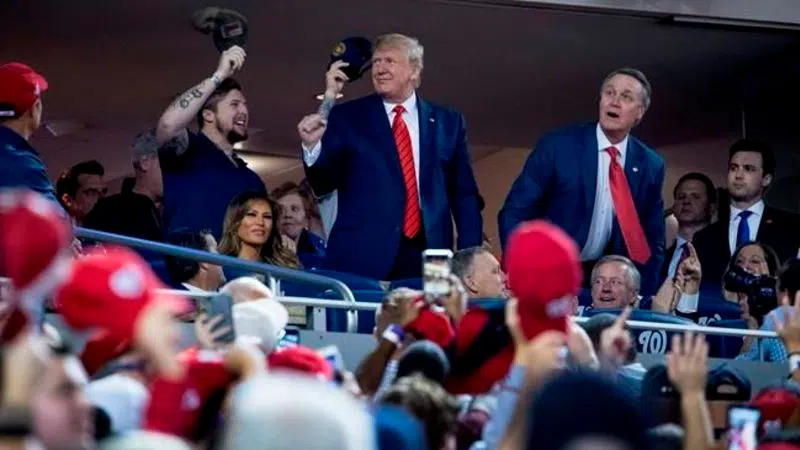
Early and pricey: Trump’s World Series ad an expensive pitch
WASHINGTON — President Donald Trump’s campaign delivered a brushback pitch during the final game of the World Series with an in-your-face national TV ad more than a year before the 2020 election.
The swaggering TV spot, complete with an image of Trump presiding over the weekend raid that killed the Islamic State’s leader, underscores the Republican incumbent’s financial advantage over the Democrats vying to replace him.
“He’s no Mr. Nice Guy,” the ad says of Trump, offering the president as a leader who hunts terrorists and get things done while the Democrats waste time on impeachment.
The 30-second ad, an updated version of an earlier commercial, includes a montage about Trump’s record on the economy and immigration, then highlights the raid in Syria that killed Abu Bakr al-Baghdadi.
